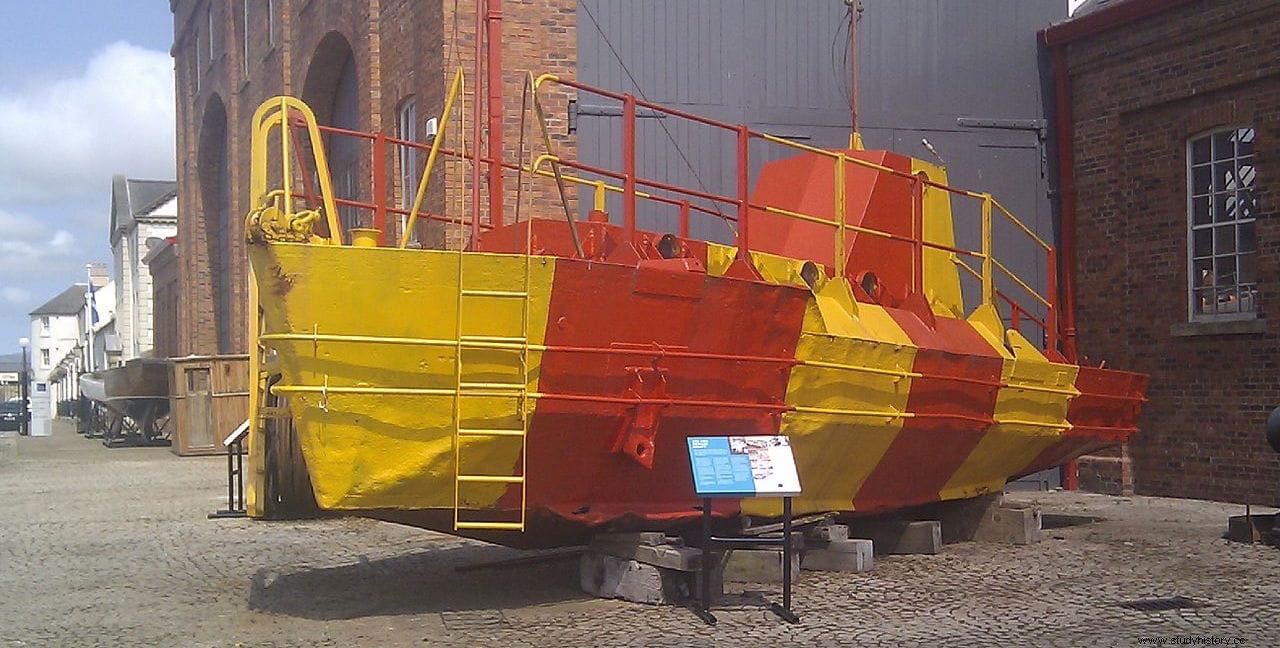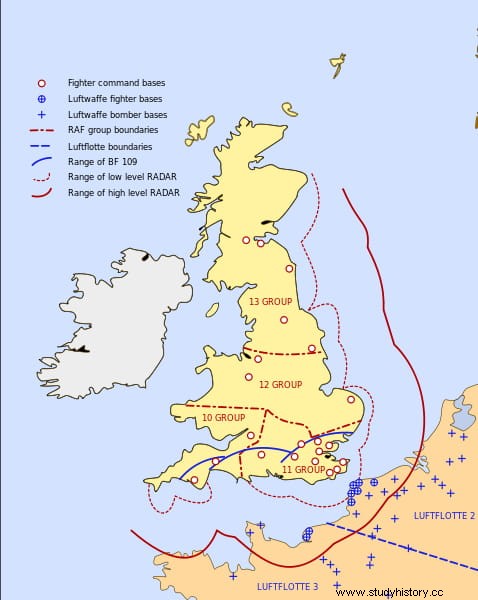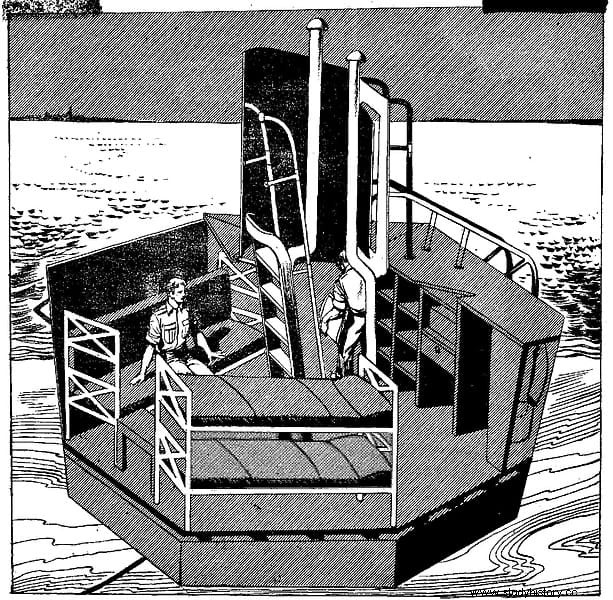Searching for a lost castaway on the high seas is an arduous and often frustrating task. Unless the search area can be greatly narrowed, the task can take so long that probably when it is finally located -if it is possible to do so- it will already be dead of hypothermia, dehydration or any other cause. Things are worse in wartime because the subject could also be injured. So it is possible to imagine the amount of dramas of this type lived by the German and British pilots who faced each other in the English Channel during the Second World War, in the context of the so-called Battle of Britain. So much so that a system was devised to try to alleviate it:the Rettungsboje o Rescue buoy.
If one makes an always recommendable trip through Scotland and passes through the small city of Irvine, on the western coast of the country, one will not only have the opportunity to discover an attractive medieval town where writers such as Edgar Allan Poe or Robert Burns lived, but also visit the Scottish Maritime Museum , a naval museum (decentralized, since part of the facilities are in the neighboring town of Dumbarton) located in some old shipyards. Most of its collection is industrial in nature and, therefore, made up of port machinery and ships from the 19th and 20th centuries. But there is also a strange boat that does not go unnoticed.
It is the ASR-10, acronym and number of the Air-Sea Rescue Float , a rescue buoy developed by British engineers of which sixteen units were built, deployed along the main routes used by air squadrons that crossed the English Channel to bomb enemy targets on the continent. This type of ingenuity was designed so that downed pilots would find an acceptably comfortable shelter that would allow them to survive until their rescue, hence they had ad hoc equipment. such as first aid kit, drinking water, food, kitchen, stove, clothes and blankets. It also had a radio and had seating for six people.
The characteristics of the buoys, by adapting old steel hulls from retired vessels, made it possible to house half a dozen berths and, therefore, provide their eventual users with some comfort, given the circumstances. The castaway could climb without difficulty using some stairs or through the stern, as it was inclined and had a grate that allowed climbing. That same fusiform physiognomy was what led to the ASR-10 being reused at the end of the war and converted into a yacht; Later, the war material began to be revalued as heritage and the device underwent restoration for its exhibition in the museum, showing its striking alternating yellow and red colors.

However, it was not the English who had the original idea of creating and locating rescue points in the maritime strip that separates their country from the rest of Europe, but rather the Luftwaffe, the air force of the Third Reich. Before we reviewed the Battle of Britain, generic name given to the opposition presented by the RAF to the bombing campaign unleashed by German planes. Hitler needed to gain superiority in the sky to protect Operation Sea Lion, that is, the invasion of the British Isles, given the inferiority of the Kriegsmarine compared to the Royal Navy. The confrontation was fierce, since it lasted longer than expected (four months between July and October 1940) and, consequently, the casualty figures were overwhelming.
Thus, the Luftwaffe lost almost two thousand aircraft per thousand and a half of the British. That meant hundreds of men from both sides who lost their lives and many others who survived being shot down or a forced splashdown, ending up at sea awaiting rescue which, as we said before, added to its intrinsic difficulty that derived from operating in a combat zone. Therefore, in September 1940, the RLM (Reichsluftfahrtministerium , Reich Air Ministry) commissioned the T-Amt (Technisches Amt , an area of research and project development) to work on the design of an emergency solution for those pilots and crew who were lost but still alive.

The T-Amt was led by the generaloberst Ernst Udet, a former World War I flying ace who, despite loathing his position for being merely administrative (which led to alcoholism and eventually suicide), had promoted the technique of dive bombing and the most characteristic aircraft for it, the famous Stuka . On this occasion he complied again and presented what was baptized as R ettungsboje o Rescue buoy, popularly known as Udet-Boje for obvious reasons. Over the next two months, fifty units were built (later as many would be added) that were distributed throughout the English Channel; two of them were dragged by British ships to study them.
The concept was simpler than the one that the British would later do and was more in line with its name:it lacked a hull itself and was a floating capsule with a square or hexagonal shape that measured thirteen square meters and had a four by two compartment. high, with capacity for four people. It was topped by a two-meter turret that extended into a mast with an antenna with white and red light signals (visible almost a kilometer away), as well as sound (a radio SOS) and smoke.

The castaways who glimpsed the striking color of the buoy among the waves (yellow, like the ASR, but adding Red Cross emblems), could swim there, check the direction of the current thanks to a hundred-meter tape with floats that were attached to the contraption, grab onto some railings to climb up and open the access door. Then came the end of his hardships. And it is that, inside, they found first aid equipment, two pairs of superimposed bunk beds, dry clothes, a stove, a flare gun, a transmitter, cigarettes, cognac, board games to entertain themselves, tools to plug the possible bullet holes and a water pump in case there were leaks.
The provisions, which included twenty-five liters of drinking water, lasted four days and had to be replenished by the rescuers, who did not take long because the buoys they were anchored to the bottom at fixed points, so they could be checked daily. To facilitate the arrival to the boat or seaplane that came, there was even an inflatable lifeboat. Thanks to all this, many airmen managed to survive and, in fact, the Rettungsboje transcended their use by inspiring the current Rettungsbake (rescue beacons for hikers stranded in shallows off the German coast) and covered life rafts on ships.
